The Santa Clara Valley has evolved from a thriving agricultural community in the 1800s to the Silicon Valley of today—arguably the leading tech innovation hub of the world.
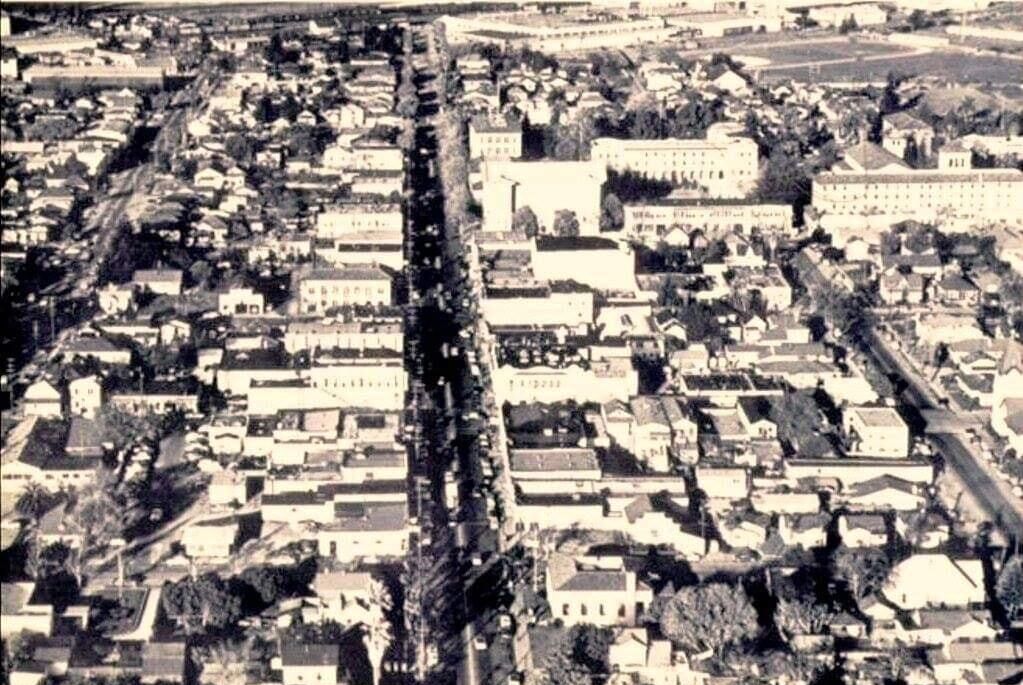
Downtown Santa Clara from above, early 1960s.
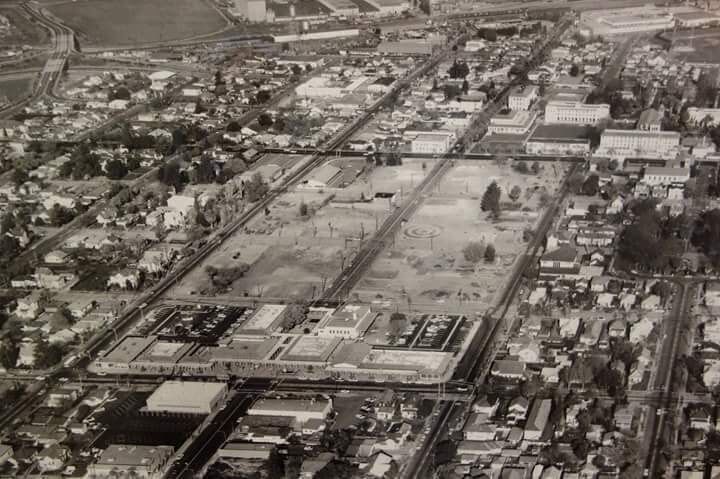
Downtown santa clara after demolition, 1970s.
Santa Clara Valley has evolved. Over time there has been a significant change in population, size of its cities, socio-cultural context, and the economic forces at play. Many of the largely suburban communities have transformed into urban centers attracting people from all over the world. Key reminders of history remain in central Santa Clara today, including the Mission and the vintage houses of the Old Quad neighborhood. But an important piece of the the city and region's history was obliterated during the urban renewal movement of the 1960s: downtown Santa Clara. Santa Clarans are eager for the once bustling downtown of earlier times to return.
1880-1910: A thriving downtown
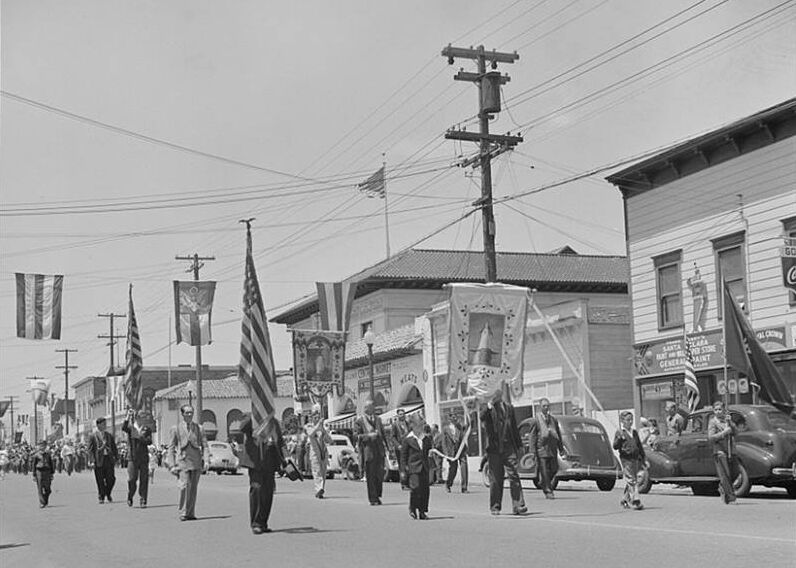
parade down franklin street
What was downtown like between the 1850s and 1950s? How did it evolve?
Santa Clara had a typical main street district, with storefronts lining the sidewalks and a mix of 1- to 3-story buildings. It had memorable landmarks: the Santa Clara Theater and the old City Hall. The corner of Franklin and Main Streets was known as “Bank Corners."
Franklin Street, unpaved and lined with horses and carts in its early days, soon came to have a streetcar line. If there was a parade in Santa Clara, it took place on Franklin Street.
Downtown grew and aged and changed, as all places do. And like many downtowns throughout the country, by the early 1960s downtown struggled with competition from shopping centers and the rise of a car-oriented lifestyle.
Late 1960s: From active community corridor to the demise of downtown
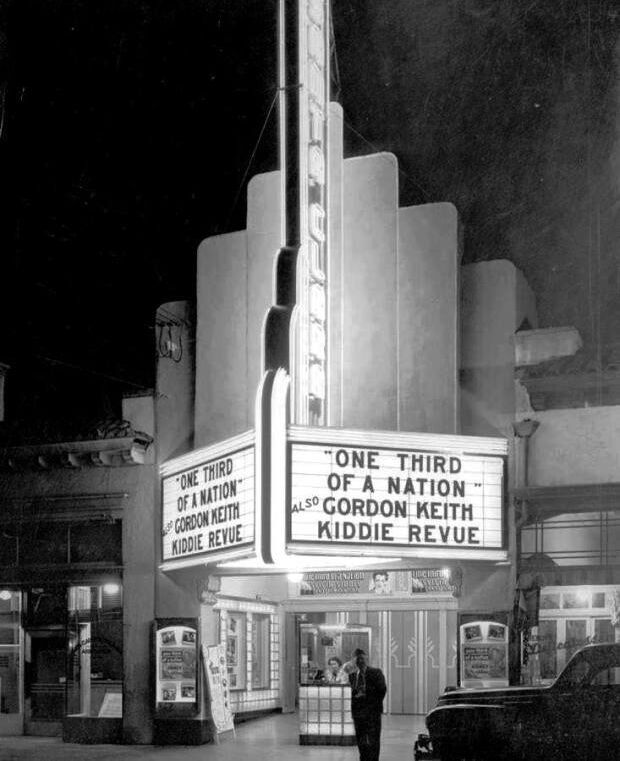
Santa Clara Cinema, 1939.
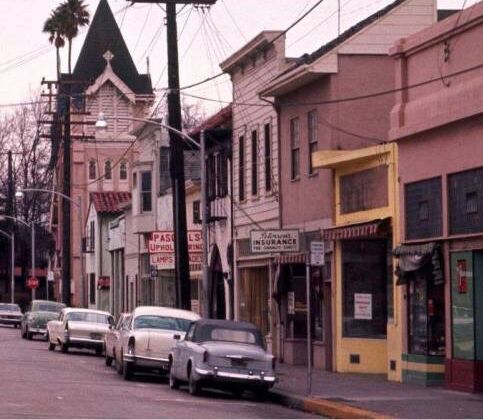
a more vehicle oriented Main Street, 1962.
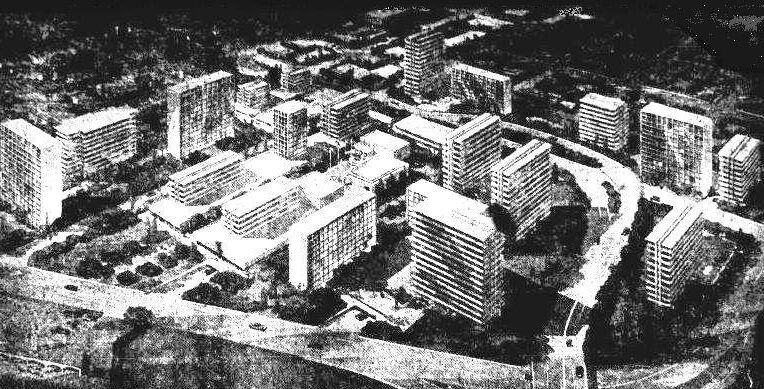
proposed university urban renewal project on downtown site in 1963.
this led to the demolition of downtown in 1965, but the project was never realized.
What caused the demise of downtown?
At the time, the City’s Redevelopment Agency identified eight blocks of downtown as the University Project Area, envisioning a super block of modern shopping and business center that would take its place. City Council approved the project in 1963, and downtown’s streets and buildings, shops that had been there for generations, were soon razed to the ground. While two blocks of Franklin Mall – the first phase of the project -- was completed in 1966, subsequent phases did not materialize. The bulk of the downtown remained empty for two decades, followed by an array of unrelated development.
1990s-2000s: Downtown lacks a physical sense of place, but there is community life
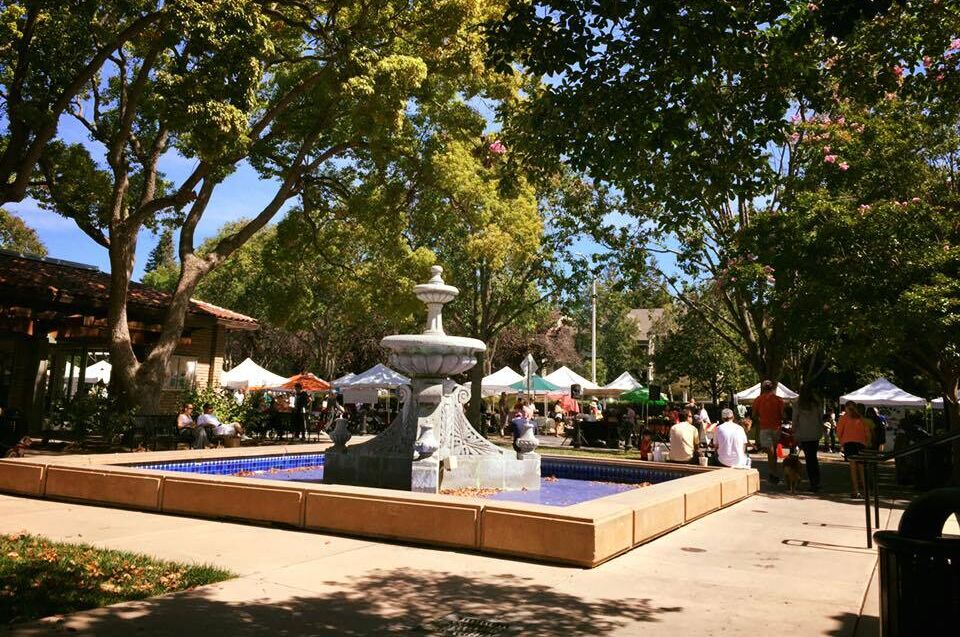
Santa Clara Farmers' Market
What is downtown today?
Today, the former Urban Renewal zone, plus two adjacent blocks to the west, includes the Franklin Square commercial center and plaza, the historic Post Office, a 1970s-era County Courthouse, and a circa-1980s office building and apartments. The two western blocks retain a main street fabric along Franklin Street.
“Urban renewal” left downtown without a physical sense of place—but there is community life. There are restaurants and fitness studios and professional offices. Special events occur in and around downtown: the Annual Street Dance, the Easter Egg Hunt, and the Festival of Lights, a tour of historic homes. A farmers’ market occurs every Saturday morning at Franklin Square, bringing live music, locally-grown food and flowers, and most importantly Santa Clarans, year-round.
2021: Opportunity awaits
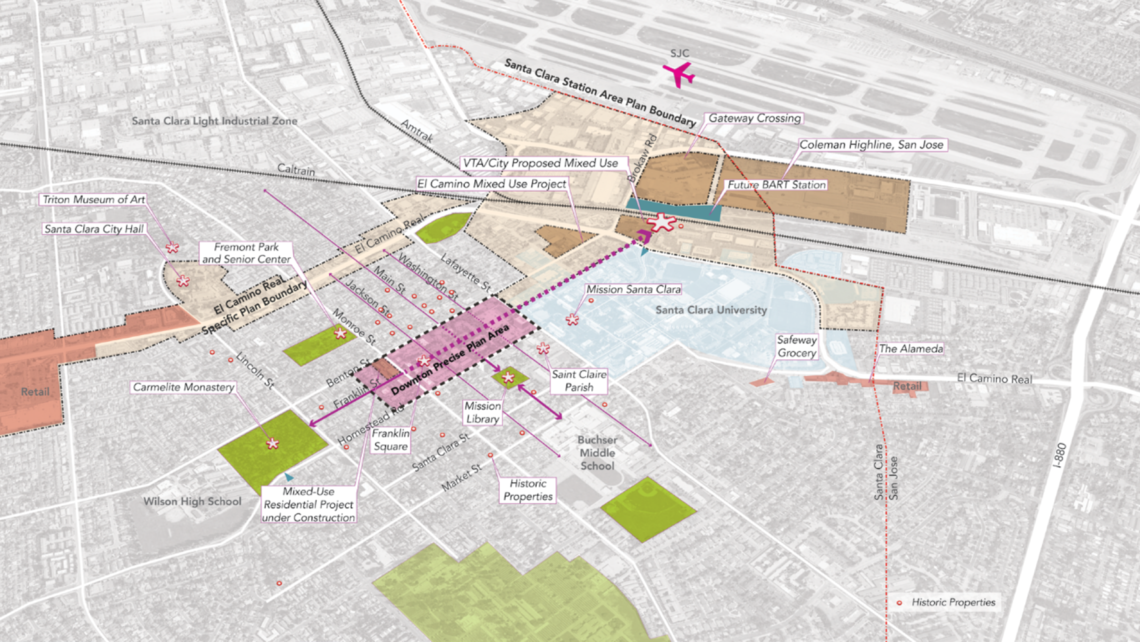
The Opportunity
Downtown was lost—but never lost in the local imagination. In recent years, community members formed an advocacy group, Reclaiming Our Downtown, and have worked energetically to bring their goal into public view and get City support.
The Downtown Santa Clara Precise Plan exists because of that vision. While the project area is small, the potential to reinstate Santa Clara’s identity is great. Here is where Santa Clara has the opportunity to bridge its past with its future.